


Apsara is a tale of sinister cultural wars eliding the prospect of genetic ‘revival’. Themes that ‘intermingle’ in today’s vibrant animosity!
Two cells of jihadi terrorists create havoc that ranges from the farcical to the deadly; two Russian mafia brothers, one a patron of the arts, the other behind bars for brutally murdering a rival, share a budding consequential hatred of one another; and a horny sex addict goes ‘wonderfully’ berserk. These are a few of the characters populating Willard Thurston’s illustrated novel, Apsara, the restorative nymph enamored by both god and man.
All of the above is written in Thurston’s inimitably erudite, satiric fashion. Throughout the novel, we find recurring themes: voyeuristic licence in the media; the waging of a culture war on older stolid mores; and the furor of (radical and not-so-radical) feminism. It’s a world where identity and appearance are ever malleable; endowment vexes us with pesky philosophical questions, and the ruthless rarely confront their misthanthropy. A tale for red-blooded readers! — Beth Werner
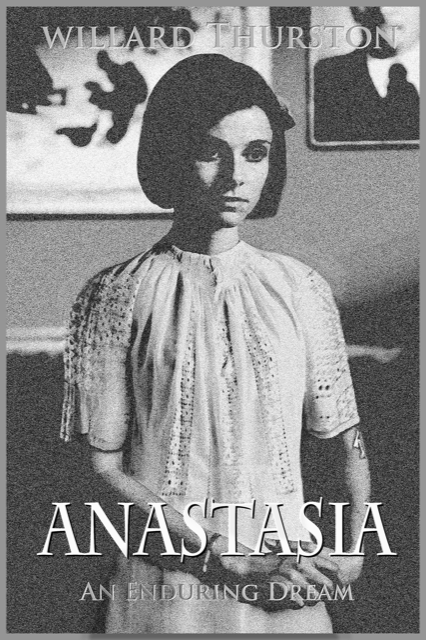
Anastasia: An Enduring Dream is a tale of a Russian’s numinous survival — but in the modern era! A narrative full of sinister plots, utopian genetics, and a supercomputer with awesome predictive powers. Throughout there is a pervasive gothic atmosphere of paranoia mixed with an archness that brings to mind graphic novels and comic books — grotesque evils and evildoers, sexy women, suave men. Given that the characters include a photographer, model and exotic dancer, there’s a fair amount of voyeuristic fantasy a la classic James Bond, complete with detailed fetishistic descriptions. A tale for readers who savor mind numbing intrigue. —Booktrib
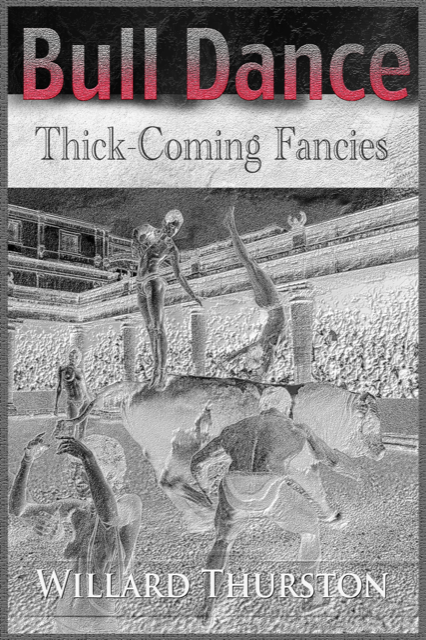
In Bull Dance, Willard Thurston’s follow-up to Anastasia, we are treated to yet another prismatic rendering in the complex tale of the fates and fortunes of the Kniaźnin-Stolbanov sisters and the constellation of memorable characters swirling in their wake.
There’s Anastasia Kniaźnin, a Russian spy deep undercover working as an engineer at the American megacorporation Paleomena under the alias Dr. Frieda Van Eerden. There’s Zoya Stolbanov, Anastasia’s half-sister, a gifted but impudent exotic dancer on the run from jihadists and Russian operatives. And finally, there’s Catherine Whyte, Zoya’s long-lost twin, a svelte investigative reporter whose exposé of a Russian mafia boss lands her in a pile of danger and intrigue.
Most of the characters in Bull Dance are familiar denizens of what I like to call the Thurstonverse, a sprawling series of novels that include Anastasia , Apsara , What Made Thee , and (to a less integrated degree) Fail Safe . And while it further knots together some of the many loose threads we find dangling enticingly throughout Thurston’s work, it does not draw the series to a close. In fact, I would argue that we haven’t seen how far the rabbit hole — or its maze of burrows — goes.
Thurston’s many obsessions with identity, cultural constructs, perversion and idealism are all at play in Bull Dance, and his erudite wit punctuates many amusing scenes (including one particularly bizarre dinner party). His world, as ever, feels removed from our own on several levels: heightened language, bizarre circumstance, futuristic vision. It’s a place full of lushly drawn detail on the one hand and an undercurrent of foreboding on the other, a vivid and unending dream — one that’s hard to shake after awakening.
Cynthia Conrad, BookTrib

“Has anyone in this crowd thought much about — What made thee? What Made Thee? Not who you slept with last or why you put that chalk dust up your nose but — What made thee? Where did you, babe, dude or specialist come from? Why and how? Stuff like that. What made thee?” These words, part of an odd, ranting schtick by an alcoholic stand-up comedian, form the setup for What Made Thee: A Sobering Tally by Canadian author Willard Thurston.
The comedian’s uncomfortable standup routine spurs David’s reminiscences of growing up in Burdock, Saskatchewan, the son of a doctor and a schoolteacher whose Methodist sensibilities were an impediment to his less practical, artistic sensibilities. An adolescent interest in the female form leads him down a path into art — sculpture and drawing, specifically — a talent he learns early on to hide from his parents, who disapprove of ‘prurient interests’. It’s precisely through his art, however, that he attains the admiration and companionship of Julian Wagner (the comedian) whose sister, Johanna, David sees as an epitome of the idealized female form. The Wagners become key components in his subsequent coming-of-age experiences. But this tale isn’t the only one told in the pages of What Made Thee.
Yuri Sergeevich Vlasov, a Soviet KGB field agent on assignment (based on the Cedar operation described in The Mitrohkin Archive), stumbles upon David’s schoolmate, Vida Semple, playing a piano in her basement late one night. The virtuosity of her playing would later amaze him, especially when he discovers that the child is autistic. Vida would go on to become a salient distraction for Yuri, and eventually his salvation.
The stories of these two sets of characters intersect tangentially, held together by Thurston’s subtle literary themes, the concept of “the ideal” chief among them. From the clay forms David learns to sculpt with an increasing degree of realism, to the advent of utopian eugenics, there is a preoccupation throughout the novel with exploring the ‘maker’ and the ‘made,’ which makes for a rich and imaginative tale that vivifies the h human need for understanding. —BookTrib
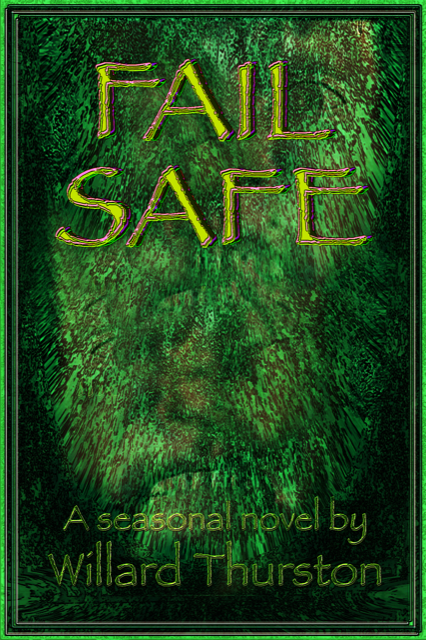
A photographer with a limp and progressive hearing loss, a lithe actress who lands a plum role in an art film, and a recently sworn jihadist and drug dealer, are just three of the many fascinating and complex characters that populate Willard Thurston’s illustrated novel Fail Safe, a tale of the entertainment industry.
When actress Tara Quin, fleeing a drug gang in her hometown, lands a role in Moon Disk, a film based on an Aztec myth, she is dismayed to discover her ex-boyfriend, Ryan Dyck, stalking the set — the very person who prompted the gang to shake her down for some money she was supposedly holding for him! It is only when a brilliant and cultured patron offers gifted Tara protection, that the young actress feels safe to resume filming. As a side project, the patron hires Tara as a model for a fashion shoot, where she meets our story’s main protagonist, Mason Bascule, photographer and sometime pal of her ex-boyfriend. The attraction is immediately apparent, and the two embark on a deepening bond of love and care for one another.
Tara’s troubles do not end there, though. And this aspect of the story is just one of many threads that include: the attempted murder of Tara’s half sister, an Irish folk singer, during the Vancouver Stanley Cup riot; the gang-related killing of another of Mason’s friends in a terrifying case of mistaken identity; and a disastrous desert film shoot that ends in another gory and gratuitous murder. Criminals of every stripe intersect throughout — not only the aforementioned street gangs, but also terrorist cells and even the IRA. What all the mayhem has in common, however, has to do with the “toxic” presence, influence and actions of maniacal Ryan Dyck.
A former commercial illustrator, Thurston’s accompanying illustrations are stunning in their realism. A composite of photographs, collages and painstaking hand-drawn details, these lend an ‘uncanny valley’ quality — perhaps a nod to the artifice that pervades the film industry and fashion modelling. Thurston is indeed a talented multimedia artist in his own right. Fail Safe is a tale where connections between people and events are ever-evolving, where art and sleeze cohabit, and where witty wordplay and droll explications abound. — BookTrib

‘An intellectually snobbish, would-be writer living in his employer’s treehouse. The exhibitionist thespian daughter of a beleaguered preacher. A ‘mercenary thug’ with little compunction about killing, whether for hire, vengeance or sport. A sinister Iranian-Russian plot to shuttle a nuclear artillery shell to America’s borders and elicit under-the-radar diplomatic concessions. An international autumn festival in Vancouver — the ingredients in the novel Cherry Bomb. It’s a universe where philosophical, highbrow intellectualism meets lowbrow prurience, where academics, ‘woke culture’ and pop culture are equally and thoroughly lampooned. One is reminded at times of Vonnegut, Nabokov, Robbe-Grillet, but really these comparisons do not do full justice to the combination of experimentalism and broad parody inherent in Thurston’s writing. It’s something you’ll need to experience firsthand.’ — Cynthia Conrad, BookTrib
‘Cherry Bomb, by Willard Thurston, is an explosion of commentary on human foolery, for mindful readers who aren’t put off by an impressive vocabulary. Taking an intellectual lens to the mayhem of modern society, these are not politically correct, sugar-coated observations, but raw, searing reflections of how time, competition, and greed are eroding our collective moral compass. Thought-provoking, blended with sharp humor, and insightful, this book will make for passionate dinner table conversation.’ – Beth Kallman Werner, Editor and Publisher, Author Connections
‘Thurston is an imaginative writer, who excels at weaving his characters in and out of one another’s stories.’ — Kirkus Reviews.
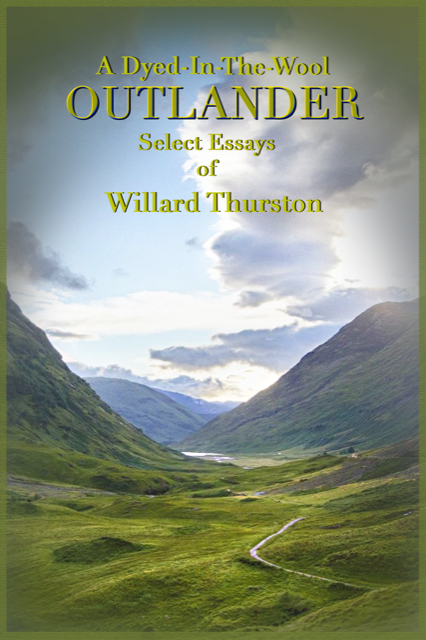
The essays in Dyed-In-The-Wool Outlander are presented as a series of editorials penned by the Alter Ego of a man named Tim. Unlike his Alter Ego (referred to as AE) — Tim doesn’t get too riled up about the news and entertainment media’s avid showcasing of violence, both lascivious and barbaric (the growing addiction to turmoil); public education (which seems bent on assuring youngsters that gender doesn’t exist and that intelligence, as measured by things like IQ, is as mythical as beauty); and culture (essentially the recognition that being white was more or less unforgivable).
Nevertheless, Tim decides it’s best to hear AE out, to learn the skinny about love mongers (a variety of hate mongers), and the pervasive inclination to contradict or ignore some measure of established knowledge in favor of one’s own agenda. While the essays in The Dyed-In-The-Wool Outlander ruminate on some popular pieces in the media, such as the Starz adaptation of Diana Gabaldon’s Outlander series and Robin DiAngelo’s White Fragility, the reader does not have to be familiar with these in order to understand AE’s arguments. Amidst his debate, he provides the necessary background information and definitions to accommodate the uninitiated.
One of the most rewarding aspects of this collection is the writing. Those readers enamored with language itself will find Thurston’s deft words most pleasurable. Examining multiple arenas that influence current cultural perspectives, from the academic realms of philosophy, literature and science to the more widely accessible realms of pop culture, The Dyed-In-The-Wool Outlander posits a complex and wholly provocative assessment of many hot button issues that will leave readers with much to consider. — Beth Kallman Werner
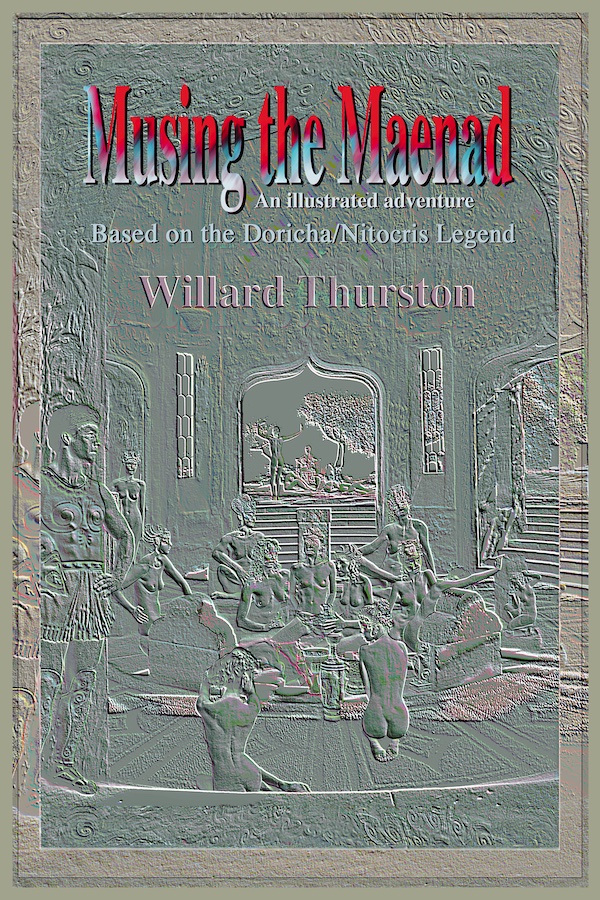
CREDITS: Text, photography (artefacts, model portraits, landscapes) and scene assembly: Willard Thurston. The line drawings in Costumes of the Greek & Romans (also Egyptians, Phrygians, Parthians, Etruscans and Persians) by Thomas Hope, Dover Edition 1962, were helpful in fashioning realistic period dress and amor. PLAYERS: Egyptian-Nubian Viceroy: Cyril Rodney; Zelea: Shelly Sanderson; Thera: Linda Armstrong; Epopt: Terry Barclay; Scheira: Wendy Robinson; Regent: Rita Meuser; Rhene: Martine Hensen; Centaur: Soren Kaupkristen; Thera Artist: James Cooper; Graces & Pythia: photoshopped composites.
Musing the Maenad is a fanciful retelling of the spare and sketchy Bronze Age legend of Nitocris, an Egyptian Queen who inspired the building of the Micerine pyramid. A later Greek story describes this Queen as Greek, a peeress named Doricha or Rodopis (Zelea in our version) who transfigured her resident status about the same time as her compatriot, Aesop. The two accounts overlap in several respects. Zelea’s life before becoming a Royal Consort is the period with which we begin the telling of our tale, in which Zelea’s Greek status is conceived as Minoan, and her home, Glaea, modelled after the historic Knossos.
Some mural and wall painting fragments from Bronze Age Crete (at Knossos & Akrotiri) suggest the likelihood of a notable class of women who derived is power from the hegemony of the eminent priestesses who tended the Labyrinth and its cult or cults of the Venerable Goddess. The rituals themselves appear to have been elaborate, sensual, and intensely liturgical.
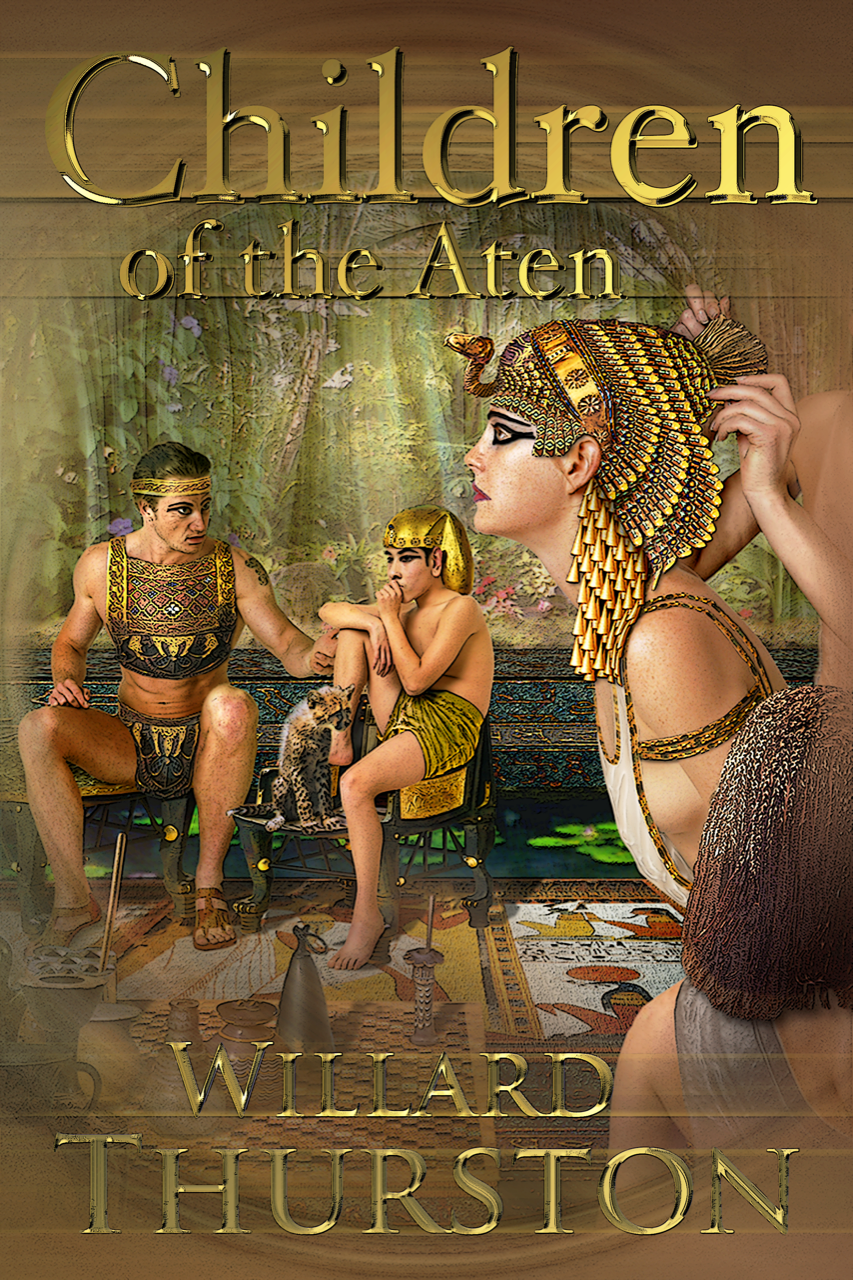
CREDITS: Text, story line, model portraits and scene construction: Willard Thurston. The exquisite line drawings in Costumes of the Greek and Romans (and Egyptians, Phrygians, Parthians, Etruscans & Persians) by Thomas Hope, Dover Edition 1962, were a great help in rendering in realistic form the costumes worn by players in Nefertiti’s Gown. Several Egyptian landscapes and artifact photos by Levente Adam, on kind loan for this project, were also very much appreciated.
MAIN CHARACTERS: Nefertiti: Anna Lee Snelling. Zelea: Shelly Sanderson. Kiya: Wendy Robinson. Tiye: Deborah Pinsky. Asya: Melissa Madden. Medju: Cyril Rodney. Ay and Chancellor: Levente Adam. Tuthmosis: Jim Modoc. Akhnaten: morphed from his enormous sandstone statue.
An accounting the of the rise of the singularily presumtuous Amenhotep IV or Akhenaten, as he came to be called, the 18th Dynasty Pharaoh who championed the whorship of the sun disc, the Aten. Akhenaten's Mother, Tiye, plays a key role in the story, as does Akhenaten's Best Wife, Nefertiti. How the Akhenaten court came into being as a singular unexampled community and manged to replace a teaming patheon with a single sterile deity, the Aten — and thrived for the better part of 18 years — is the focus of the book. A highly speculative but pithy tale for the adventurous reader!
Please note: the followers of the god Amun serve as community of gods opposed to the Aten.